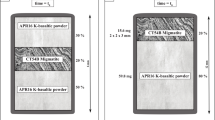Abstract.
We present chemical and isotopic data for fumarolic vapor and thermal spring discharges from Cumbal Volcano, SW Colombia. In 1988 Cumbal showed signs of apparent reactivation. Gases and steam condensates were sampled from summit fumaroles (83–375°C) of Cumbal in 1988–1996 and discharges from thermal springs (15–37°C) on its flanks in 1995–1996. Based on relative CO2, total S (H2S+SO2), and HCl contents, fumarolic discharges are principally magmatic in composition. Fumarolic steam condensates (1993–1996) have δ18O values of –11.4 to +2.5‰ and δD values of –91 to –43‰. δ18O and δD compositions indicate mixing between local meteoric and magmatic waters. 3He/4He ratios in 1993–1996 samples (5.3–7.9 Rcor) are consistent with addition of mantle-derived helium. δ13CCO2 values for 1996 samples (–6.7 to –5.0‰) likely indicate contribution of marine-carbonate, organic sediment, and mantle-derived CO2. δ34SStotal compositions (–4.6 to +5.6‰) of 1988–1996 fumarolic discharges have magmatic signatures and may reflect cycles of deposition and remobilization of native sulfur. Thermal waters are acid-sulfate or bicarbonate in composition. Relative concentrations of chemical constituents of thermal waters imply that the composition of waters is controlled by absorption of magmatic volatiles into shallow ground- and surface waters, dilution with meteoric waters along flow paths, and dissolution of host rocks. δ18O and δD compositions are consistent with a meteoric origin of waters. δ34SStotal values for thermal spring gas discharges (9.6–10.5‰) suggest deposition of δ34S-depleted sulfur minerals along flow paths. Chemical and isotopic compositions of 1988–1995 fumarolic discharges provide evidence for input of magmatic volatiles into the Cumbal hydrothermal system. From 1995 to 1996, geochemical data show increasing hydrothermal signatures, suggesting a decline in magmatic volatile input.
Similar content being viewed by others
Author information
Authors and Affiliations
Additional information
Electronic Publication
Rights and permissions
About this article
Cite this article
Lewicki, J., Fischer, T. & Williams, S. Chemical and isotopic compositions of fluids at Cumbal Volcano, Colombia: evidence for magmatic contribution. Bull Volcanol 62, 347–361 (2000). https://doi.org/10.1007/s004450000100
Received:
Accepted:
Issue Date:
DOI: https://doi.org/10.1007/s004450000100




